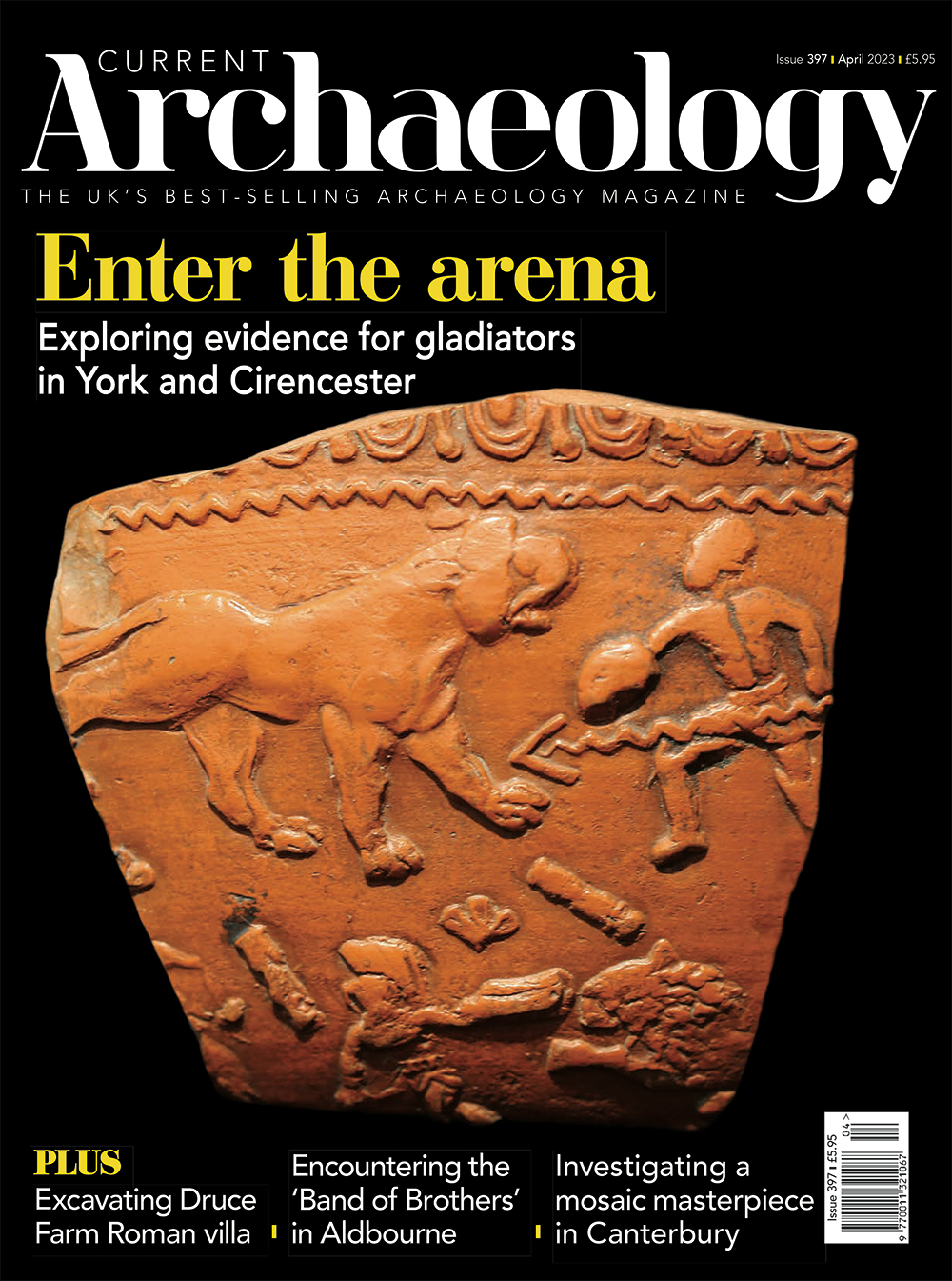From Spartacus to Maximus Decimus Meridius, images of gladiators and their life-or-death struggles in the Roman arena maintain a powerful hold today over the popular imagination. These fighters were clearly no less fascinating to their contemporary spectators, as imagery found across the empire attests – but physical remains of the individuals themselves are much more elusive. Our cover story draws together intriguing evidence from York and Cirencester.
Remaining in the Roman period, we visit the villa at Druce Farm, near Dorchester. Community excavations have revealed a compelling story of how the site evolved, the experiences of its inhabitants, and what happened as the official Roman occupation of Britain drew to a close. We then leap forward to the dawn of D-Day and the activities of ‘Easy’ Company, American paratroopers better known as the ‘Band of Brothers’. Before they made their daring jump over Normandy, these men were based in the Wiltshire village of Aldbourne – where recent archaeological work involving military veterans has uncovered traces of their camp, and of some of the site’s inhabitants.
Turning from ephemeral traces of long-demolished Nissen huts to the soaring stonework of Canterbury Cathedral, our next feature puts the spotlight on a virtuosic mosaic adorning Trinity Chapel, exploring possible inspirations behind its imagery.
Finally, we continue on this ecclesiastical theme to bring you an update from medieval York. In CA 245, we covered the ‘lost’ church of All Saints, and the discovery of an unusual female burial interpreted as that of a religious recluse. Since then, analysis of the woman’s remains has revealed new perspectives on her life.

